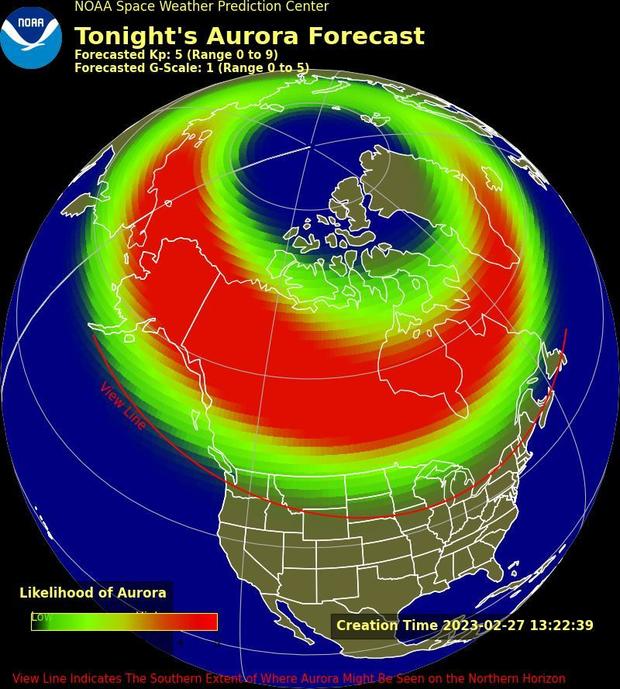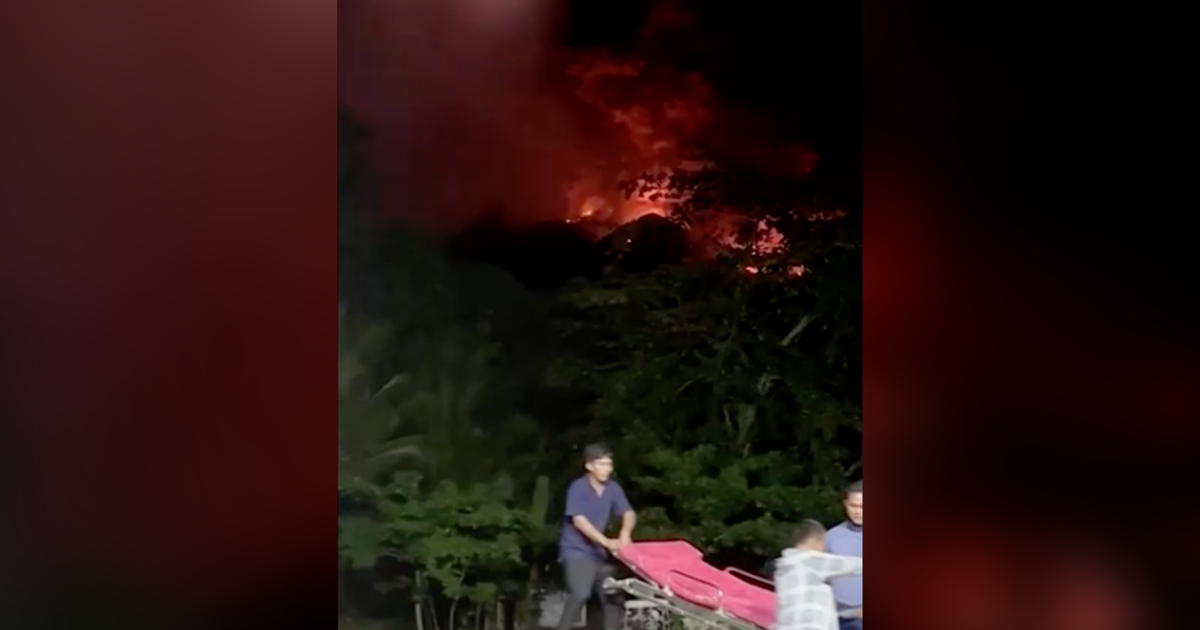Northern lights put on "spectacular" show in rare display over the U.K.
The northern lights have made an unusual appearance in the U.K.'s south, a rare occurrence for the phenomenon that is typically seen in Iceland and Scandinavia. And the show isn't over yet.
Photos shared by the U.K. Met Office show green, pink and red lights throughout the region – from the small Scottish island of North Uist to England's Cambridgeshire. Other photos also show the lights as seen from Germany.
Such a show, according to the Met office, is "very rare," as "it takes a severe or extreme geomagnetic storm to bring the belt southwards across southern Iceland or towards the Faeroes." To see the lights, the office says you usually need a "clear night with no cloud cover," as well as no light pollution. If visible, they can be seen by looking toward the northern horizon.
According to the meteorological office, the lights were caused by the arrival of a "coronal hole high speed stream" as well as a "rather fast coronal mass ejection." Both events are known by NOAA for contributing to geomagnetic storms, thus allowing for better northern light conditions.
An ejection, according to NOAA, is when the sun spews its plasma and magnetic field, and in the right conditions, such an occurrence can increase the likelihood of causing a more intense geomagnetic storm. Those storms are what allow the northern lights, also known as aurora borealis, to become more visible. Coronal hole high speed streams, which are when "streams of relatively fast solar wind" escape from the sun's coronal holes, can also contribute to geomagnetic storms, NOAA says.
NOAA's Space Weather Prediction Center said that there were "eruptions from the sun" on Feb. 24 and 25, causing the latest geomagnetic storms, which are expected to continue strongly through Monday and become more moderate on Tuesday.
The storm is ranked as G3, meaning that it could trigger false alarms on some powered protection devices, cause orientation issues for spacecraft and disrupt low-frequency radio navigation. Storms of this level can also make the northern lights visible as far south as 50-degrees geomagnetic latitude, in line with Illinois and Oregon.
"There's another chance to see the Aurora tonight," the Met Office said on Monday.
In North America, essentially all of Canada and Alaska have a high likelihood of seeing the lights on Monday night, according to NOAA's aurora viewing estimates, with some visibility possible as far as North Dakota, Minnesota, Montana and Washington.
So far, people who have had the opportunity to see the lights say it's been nothing short of spectacular.
"One of the most incredible #NorthernLights displays I could have ever imagined," one person tweeted along with a video they say they recorded on their iPhone from Fairbanks, Alaska.
Another person from Calgary in Alberta, Canada, described it as "nature putting on a show," revealing green and purple lights seemingly dancing over the city skyline.
Even those who were on flights during the event got a chance to see the lights. The airline company airBaltic tweeted a photo of the northern lights that crew members had taken from the sky.
"What a view! Last night, on flight BT214 from Berlin to Riga, our crew captured some spectacular Northern Lights over the Baltic Sea," the company said.





